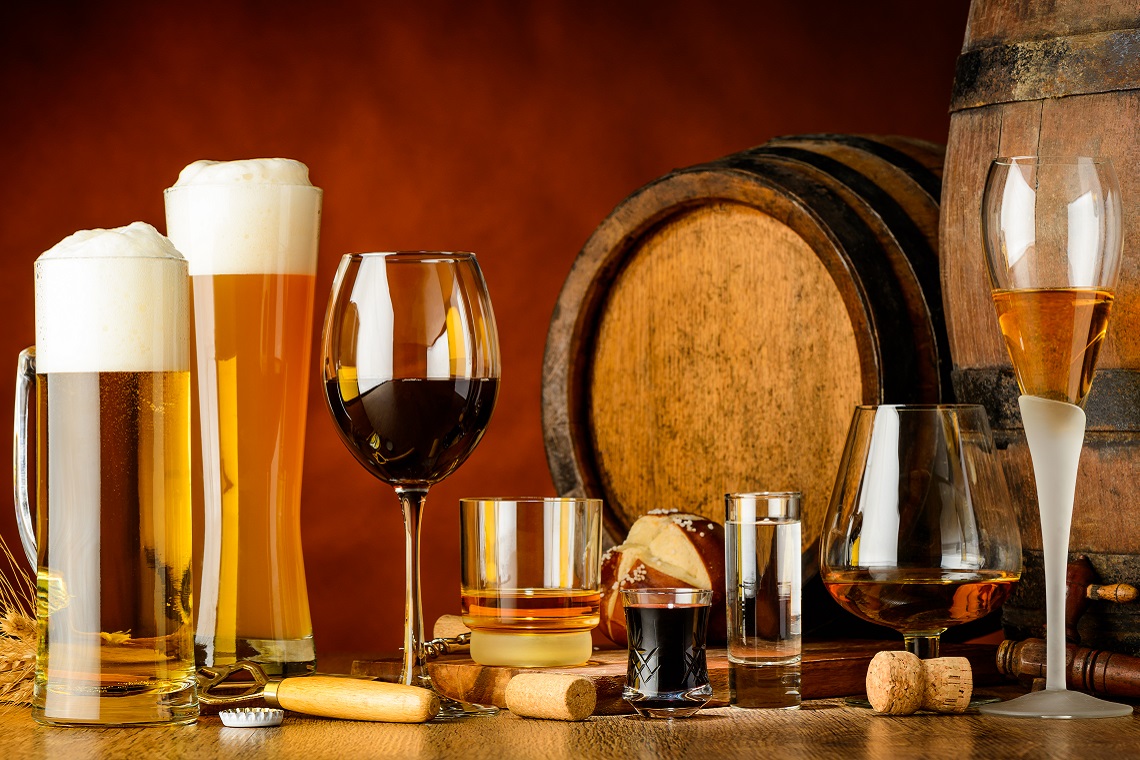Global alcohol consumption declined in 2018, compared to 2017, but is forecast to increase steadily over the next five year according to new data from IWSR.
The IWSR data shows the beverage alcohol drinkers across the globe consumed a total of 27.6bn nine-litre cases of alcohol in 2018, which represents a 1.6 per cent decrease on the prior year. The IWSR forecasts that total alcohol consumption will steadily increase over the next five years, to 28.5bn cases in 2023.
In terms of retail value, the global market for beverage alcohol in 2018 was just over $1tn, a number which the IWSR expects to grow seven per by 2023 as consumers continue to trade up to higher-quality products.
“Every year our analysts spend months traveling the world to speak with suppliers, wholesalers, retailers, and other beverage alcohol professionals to assess what is happening market by market in this fast-changing business,” says Mark Meek, the IWSR’s CEO. “The raw data we collect is enormously valuable, but equally important is what that data tells us in terms of trends, challenges, and opportunities facing the industry.”
The figures come from the IWSR Drinks Market Analysis Global Database, which also highlights some key trends and forecasts across multiple categories, including:
Gin was the Leading Global Growth Category in 2018, and Forecasted to Reach 88m Cases by 2023
The IWSR said: “The largest gain in global beverage alcohol consumption in 2018 was in the gin category, which posted total growth of 8.3 per cent versus 2017. Pink gin was a key growth driver, helping the category sell more than 72m nine-litre cases globally last year. In the UK alone, gin was up 32.5 per cent in 2018. By 2023, the gin category is expected to reach 88.4m cases globally, with particular strong growth in key markets such as the UK, Philippines, South Africa, Brazil, Uganda, Germany, Australia, Italy, Canada and France.”
Low- and No-Alcohol Products on the Rise
The IWSR said: “Low- and no-alcohol brands are showing significant growth in key markets as consumers increasingly seek better-for-you products, and explore ways to reduce their alcohol intake. Growth of no-alcohol beer is expected at 8.8 per cent, and low-alcohol beer at 2.8 per cent. No-alcohol still wine is forecasted at 13.5 per cent, and low-alcohol still wine at 5.6 per cent. Growth of no-alcohol mixed drinks is predicted at 8.6 per cent. (Above figures are all CAGR 2018-2023.)”
Beer Continued to Lose Volume in 2018, but is Expected to Rebound
The IWSR said: “Global beer declined -2.2 per cent in 2018, impacted greatly from volume decreases in China (-13 per cent). Other large markets such as the US and Brazil also fell (-1.6 per cent and -2.3 per cent, respectively), while Mexico and Germany saw growth (6.6 per cent and 1 per cent, respectively). The future outlook for beer, however, paints a more positive picture, as the category is expected to show a slight increase in 2019 and post a 0.7 per cent CAGR 2018-2023.”
Consumption of Whisky and Agave-Based Spirits Continues to Increase
The IWSR said: “Spurred by innovation in whisky cocktails and highballs, the global whisky category increased by 7 per cent last year, driven in large part by a strong Indian economy. The IWSR forecasts whisky to grow by 5.7 per cent CAGR from 2018 to 2023, to almost 581m nine-litre cases.
“Also, continued interest in tequila and mezcal and innovation in more premium variants and cocktails, drove the agave-based spirits category to 5.5 per cent global growth in 2018 – and is expected to post 4 per cent growth over the next five years (2018-2023 CAGR).”
Wine Volume Declines, but Value Increases
The IWSR said: “Wine, which had posted strong global growth in 2017, lost -1.6 per cent in volume in 2018 as wine consumption declined in major markets such as China, Italy, France, Germany and Spain (the US market was flat). However, though consumers are drinking less wine, they’re increasingly drinking better – pushing wine value to increase.
“Globally, the retail value of wine is projected at $224.5bn by 2023, up from $215.8bn in 2018. The one bright spot in wine volume is the sparkling wine category, which is expected to show a five-year CAGR of 1.17 per cent 2018- 2023, driven in large part by prosecco.”

